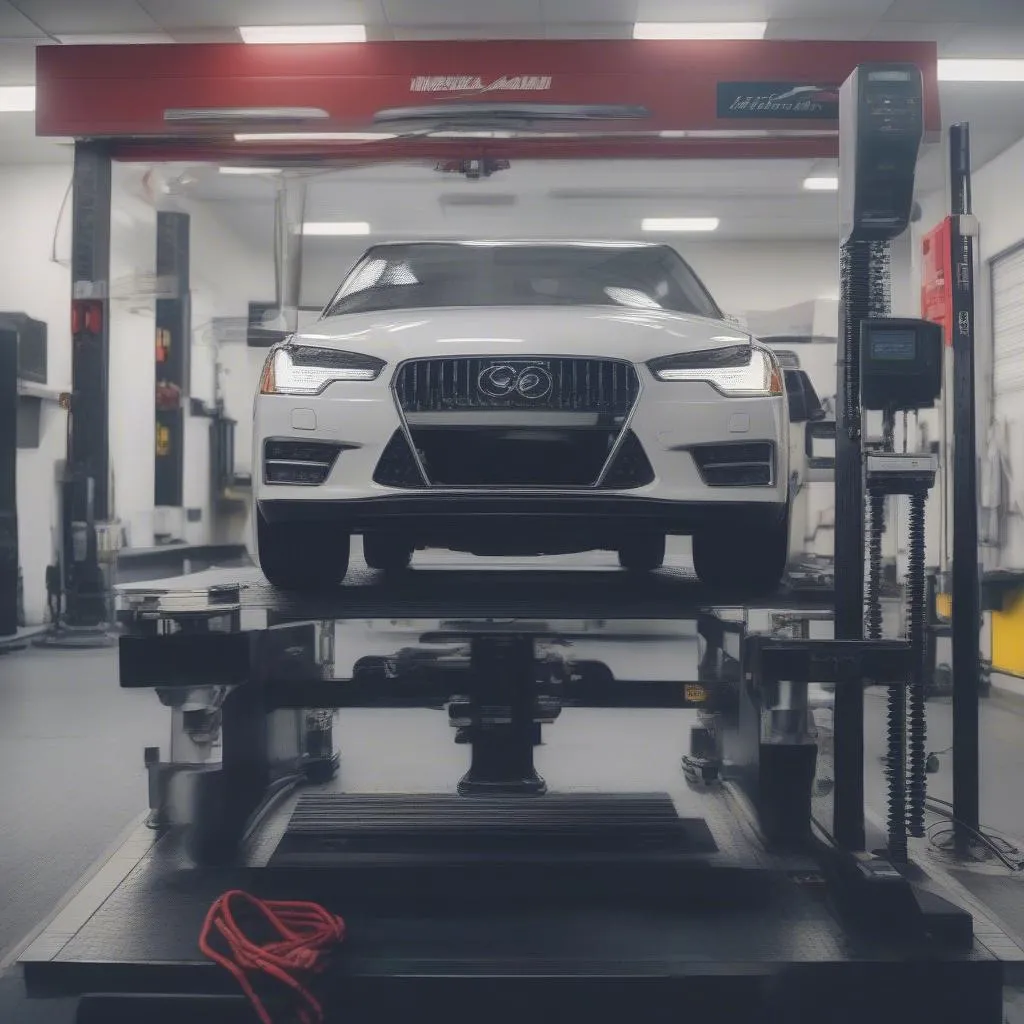Have you ever experienced a terrifying shaking sensation while driving your car at high speeds, particularly when turning left? This can be a scary and unsettling experience, leaving you wondering what’s wrong with your vehicle.
Imagine yourself cruising down a highway, feeling the wind whipping through your hair, and suddenly your car begins to shake violently, especially when you turn left. This isn’t just a minor annoyance; it’s a serious issue that requires attention.
Understanding the Problem: Why Your Car Shakes When Turning Left
Let’s delve into the reasons behind this unsettling phenomenon.
A Mechanic’s Perspective:
From a mechanic’s standpoint, this issue can stem from various factors, including:
- Wheel Alignment: Your car’s wheels are designed to be perfectly aligned, allowing for smooth and stable driving. Misaligned wheels can lead to uneven tire wear, decreased fuel efficiency, and most importantly, the dreaded shaking sensation, particularly when turning left.
- Suspension System Issues: The suspension system acts as the shock absorbers, keeping your car stable and comfortable on the road. Worn-out suspension components, such as struts, shock absorbers, or control arms, can cause excessive vibrations, especially during turns.
- Wheel Bearings: These bearings support the wheels and allow them to rotate freely. Worn or damaged wheel bearings can create a rumbling sound, especially when turning, and can contribute to the shaking sensation.
- Driveshaft Problems: The driveshaft transmits power from the engine to the wheels. A damaged or loose driveshaft can lead to vibrations and shaking, especially when turning, as it impacts the power distribution to the wheels.
- Tire Problems: Worn, damaged, or incorrectly inflated tires can cause uneven contact with the road surface, resulting in vibrations and shaking.
A Technical Viewpoint:
From a technical standpoint, the shaking sensation is often due to a lack of balance in the steering system and suspension system. When turning left at high speeds, the weight distribution shifts, and if the steering and suspension components are not properly aligned or in good working condition, they can cause the car to shake violently.
Economic Impact:
Ignoring this issue can lead to more significant problems down the line, resulting in higher repair costs and even accidents. Timely diagnosis and repair can save you money and ensure the safety of yourself and others on the road.
Solutions and Diagnosis:
Identifying the Culprit:
The first step towards fixing the problem is to identify the root cause. A qualified mechanic can perform a thorough inspection, including:
- Visual Inspection: The mechanic will examine the suspension components, wheels, tires, and driveshaft for any visible signs of wear, damage, or misalignment.
- Road Test: A road test allows the mechanic to observe the shaking sensation under real-world driving conditions, helping them pinpoint the exact issue.
- Diagnostic Tools: Modern diagnostic tools can provide valuable data about the vehicle’s systems, including wheel alignment, suspension components, and even the driveshaft.
Common Scenarios:
- Scenario 1: Imagine a driver in California, cruising down Highway 101 at high speed, enjoying the scenic views. Suddenly, their car starts shaking violently when they turn left. The driver pulls over to investigate and notices worn-out tires, which are the culprit causing the shaking.
- Scenario 2: A driver in New York City, navigating the busy streets, feels a rumbling sound and a noticeable shaking sensation when turning left at high speeds. This could indicate a problem with wheel bearings, which need to be inspected and potentially replaced.
Troubleshooting Tips:
- Check Your Tire Pressure: Ensure your tires are inflated to the correct pressure, as recommended by your car manufacturer.
- Inspect Your Tires: Look for any visible signs of wear, damage, or uneven tread patterns.
- Examine Your Suspension Components: Check for loose bolts, worn-out struts, or damaged shock absorbers.
- Get Your Wheels Aligned: A proper wheel alignment can ensure smooth and stable driving.
Frequently Asked Questions:
- Q: Can a loose steering wheel cause my car to shake when turning left?
- A: Yes, a loose steering wheel can contribute to instability, particularly when turning left. This indicates potential issues within the steering system, and you should have it inspected by a mechanic.
- Q: Is it dangerous to drive a car that shakes when turning left?
- A: Yes, it’s dangerous. It can compromise your control of the vehicle and lead to accidents. It’s important to get the problem diagnosed and fixed as soon as possible.
- Q: How much does it cost to fix a car that shakes when turning left?
- A: The cost can vary greatly depending on the cause. A simple tire pressure adjustment might be a few dollars, while replacing worn-out suspension components could cost hundreds or even thousands.
Similar Issues:
- Car Vibrates When Turning Left
- Car Vibrates Over 60 mph
Next Steps:
If you’re experiencing a shaking sensation in your car when turning left, it’s crucial to take action and get it checked out by a qualified mechanic.
Need Help?
If you need assistance with diagnosing or fixing your car’s shaking issue, don’t hesitate to contact us at Diag XCar. Our team of experienced technicians is available 24/7 to assist you via WhatsApp at +84767531508.
Stay Informed:
Keep an eye out for our upcoming articles on car maintenance, common car problems, and more!
Let’s Talk!
Share your experiences with car shaking issues in the comments below. Have you encountered this problem before? What solutions did you find?
 tires and shaking
tires and shaking
 suspension inspection
suspension inspection
 wheel alignment service
wheel alignment service